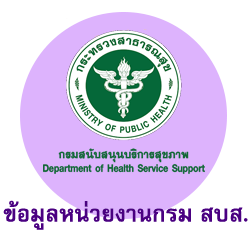EPILEPSY SERVICE IN 11TH HEALTH REGION
Keywords:
Epilepsy, Drug-resistant epilepsy, Antiepileptic drugsAbstract
Epilepsy is a major public health problem and global burden affecting to the quality of life of the patients and impacting on society and nation. Some type of epilepsy can be cured if proper diagnosis and treatment are accessed. Data from World Health Organization found that there were more than 50 million people with epilepsy worldwide and over 500,000 people in Thailand. There are no overall country information about the ability to access the treatment. The systematic review from many developing countries revealed that people with epilepsy received appropriate treatment for their conditions which was estimated of 44%. The purpose of this study was to provide an overview of the health service system for epilepsy patients in 11th health region which composed of 7 provinces including Chumporn, Ranong, Surat Thani, Phang-nga, Nakhon Si Thammarat, Phuket and Krabi. The results show that there are limited resources available to treat epilepsy patients in accordance with treatment standards especially the neurologists and epileptologists. Other resources including diagnostic equipment and a variety of antiepileptic drugs are also limited. The effective referral system as well as an optimal knowledge of indication in referring patients in a timely manner will help to reduce the treatment gap in access to appropriate epilepsy services.
References
Krumholz A, Wiebe S, Gronseth G, et al. (2007). Practice parameter: evaluating an apparent unprovoked first seizure in adults (an evidencebased review): report of the Quality Standards Subcommittee of the American Academy of Neurology and the American Epilepsy Society. Neurology, 69, 1996–2007.
Kwan, P, Arzimanoglou, A, Berg, AT, Brodie, MJ, Hauser, WA, Mathern, G, Moshe, SL, Perucca, E, Wiebe, S, French, J. (2010). Definition of drug resistant epilepsy: Consensus proposal by the ad hoc Task Force of the ILAE Commission on Therapeutic Strategies. Epilepsia, 51(6), 1069–1077.
Kwan, P, Schachter, S, Brodie, MJ. (2011). Drug-Resistant Epilepsy. The New England Journal of Medicine, 365, 919-26.
Mbuba CK, Ngugi AK, Newton CR, Carter JA. (2008). The epilepsy treatment gap in developing countries: A systematic review of the magnitude, causes, and intervention strategies. Epilepsia, 49(9), 1491–1503.
Office of The National Economic and Social Development Board. Population per health personnel. Retrieved November 4, 2018, from http://social.nesdb.go.th/social/Default.aspx?tabid=131
Rajpura, A, Sethi S. (2004). Evidence-based standards of care for adults with epilepsy - a literature review. Seizure, 13, 45–54.
Unwong, Kanchana. (2016). Clinical Practice Guidelines for Epilepsy. Bangkok: Tanapress.
World Health Organization. (2010). Global disparities in the epilepsy treatment gap : a systematic review. Bulletin of the World Health Organization, 88, 260-266.
Downloads
Published
How to Cite
Issue
Section
License
Copyright (c) 2019 Journal of Department of Health Service Support-วารสารวิชาการกรมสนับสนุนบริการสุขภาพ

This work is licensed under a Creative Commons Attribution-NonCommercial-NoDerivatives 4.0 International License.



